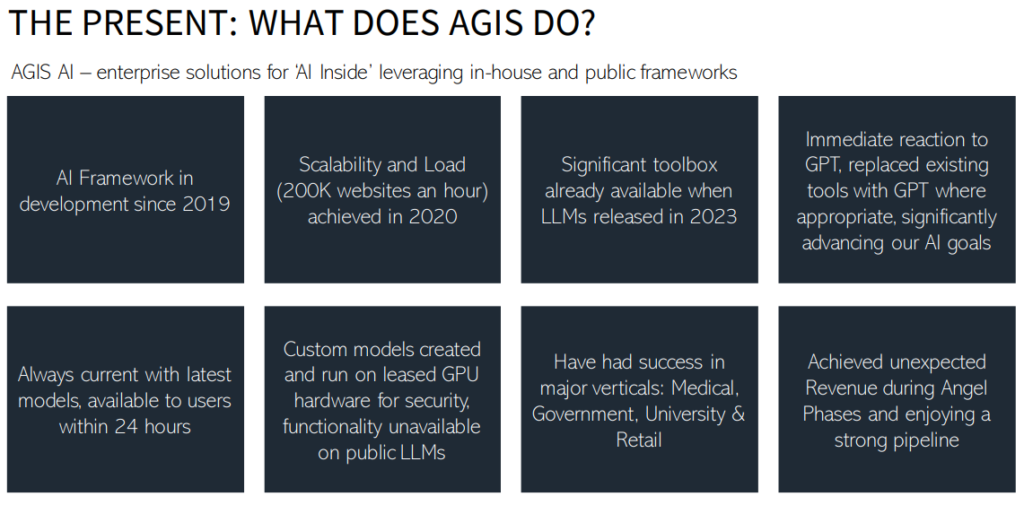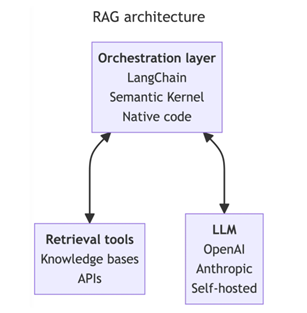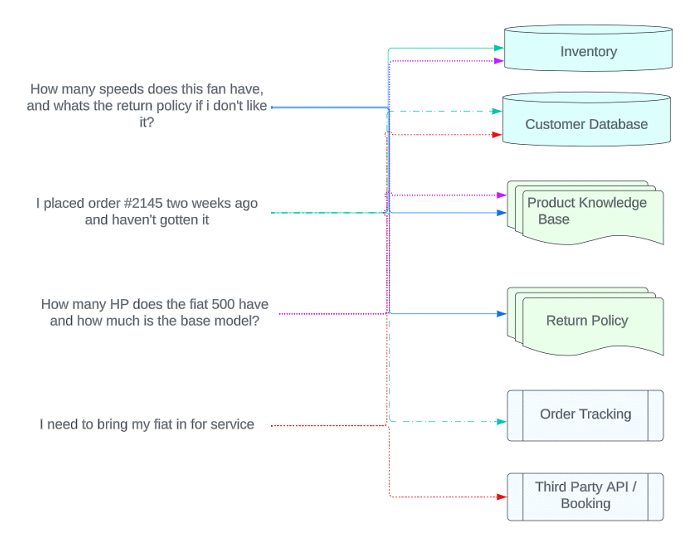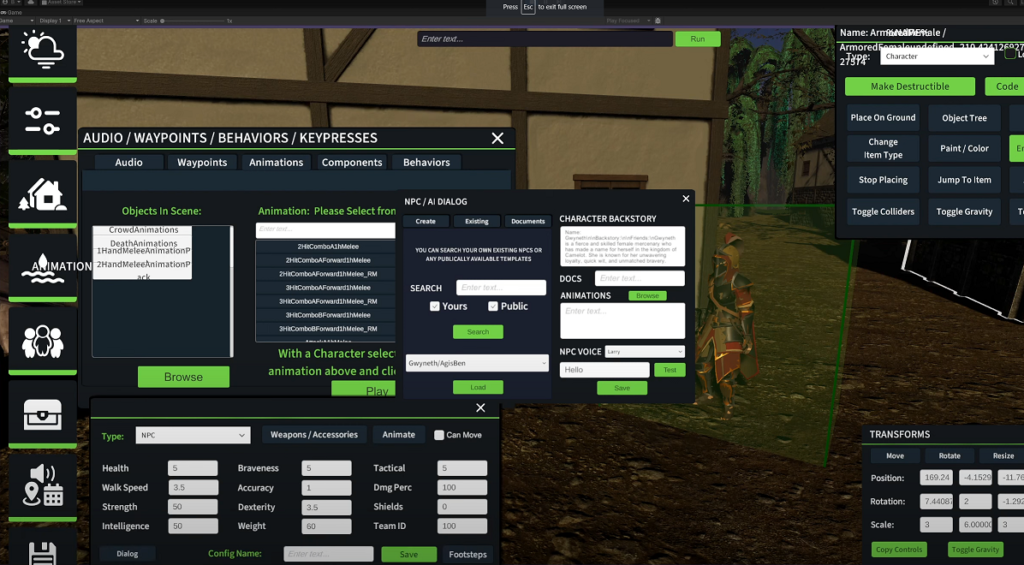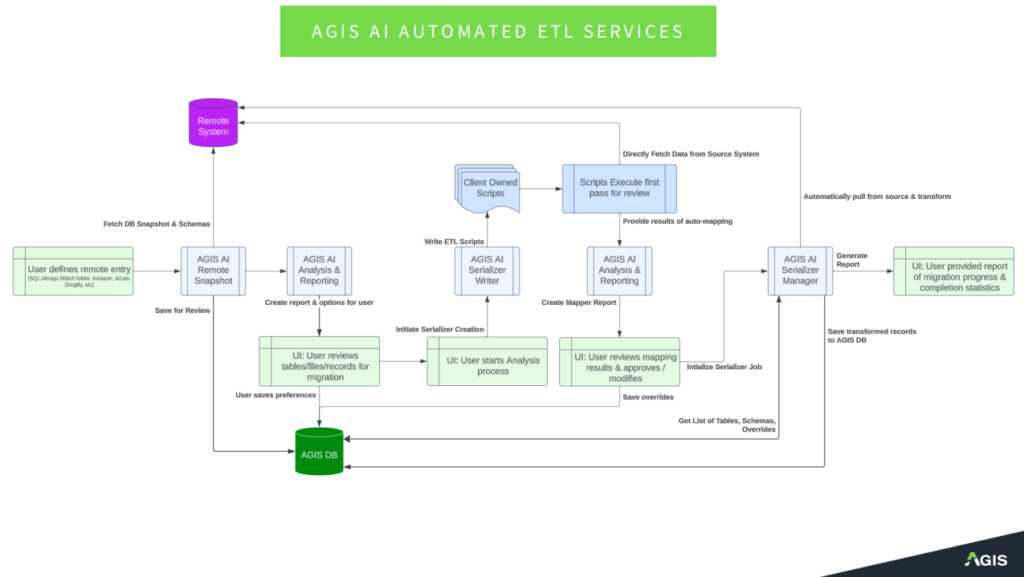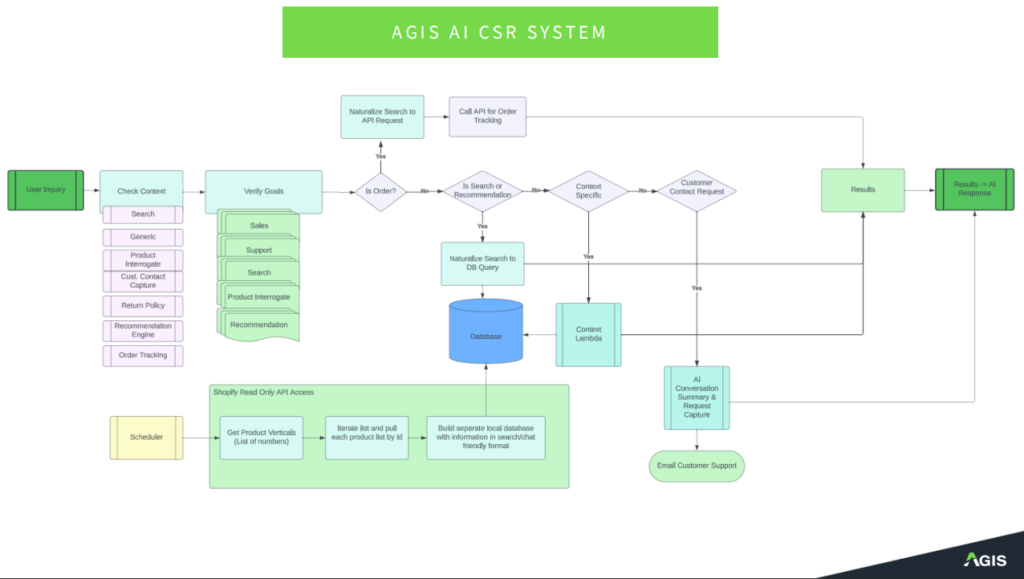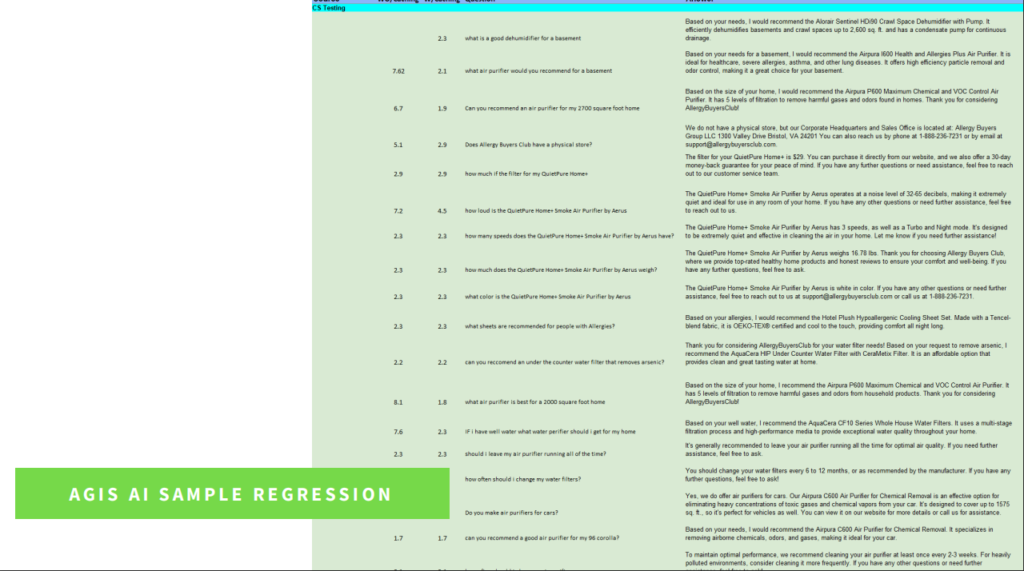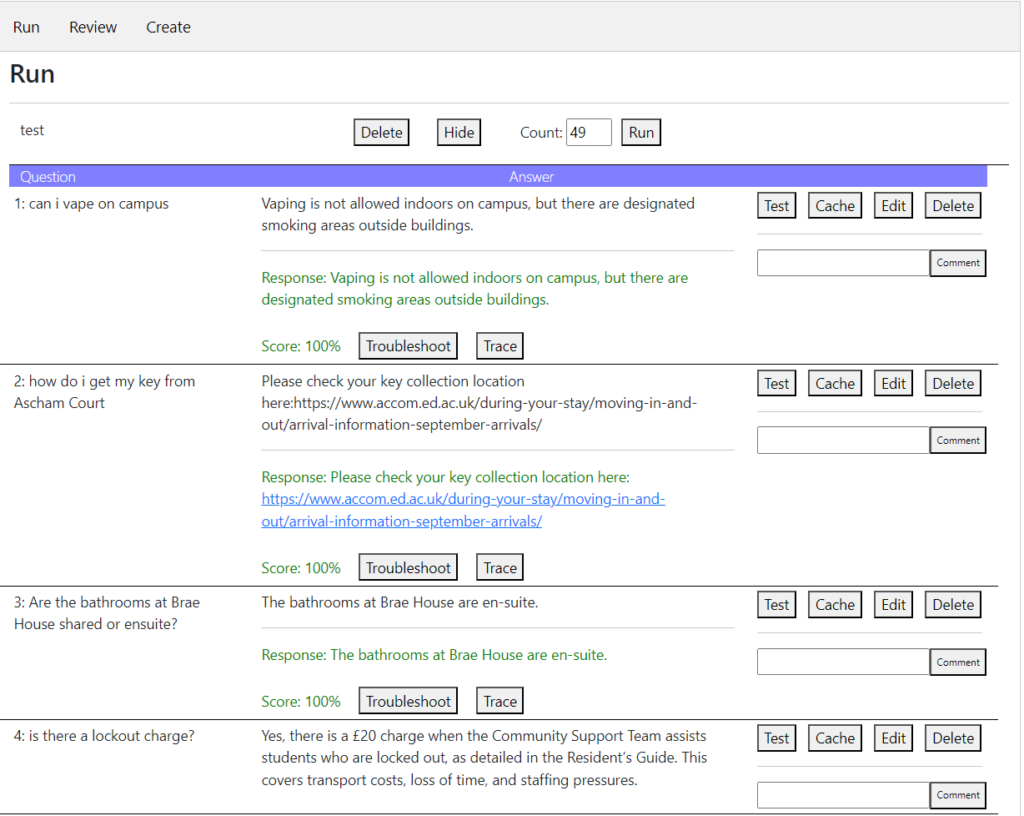AGIS began life in 2019 as an AI company, first competing at the Loebner Prize in Wales. Since then, AGIS has established a bedrock of automation, servicing major industries with cutting edge AI.

With verticals that currently include health care, government, enterprise level B2B and B2C, and even gaming, we have taken our expertise and intentionally utilized it to solve real-world problems in technologically advanced ways. Part of that discussion is ensuring that our approach is a good fit for the problem. “To a person with a hammer, the world is a nail” — It is important to apply technology in areas that make sense. We work closely with our partners and business associates to ensure the best proper fit for technology.
To best understand our current approach:
